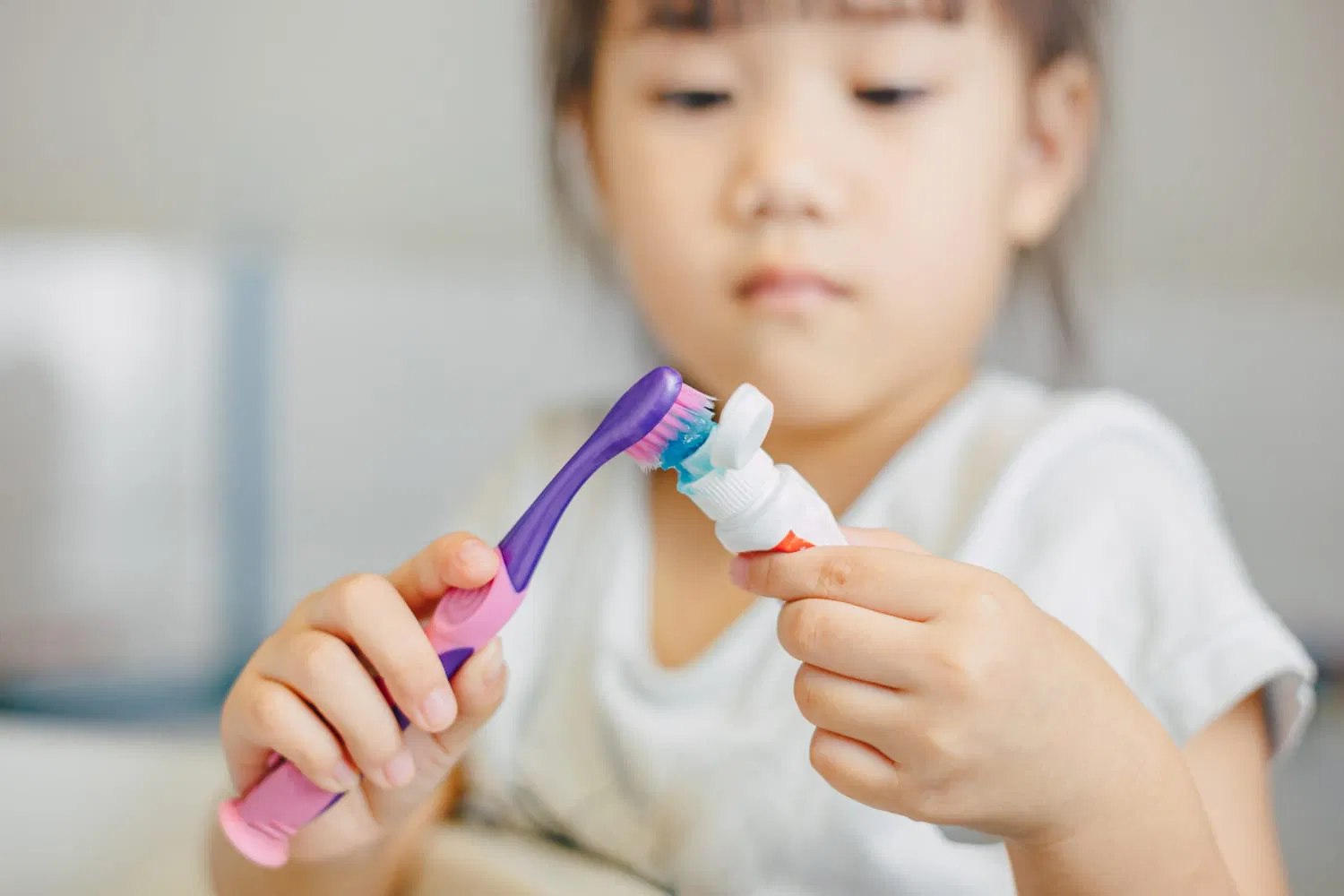
Some brushes may look fun but miss key features needed for proper cleaning at early ages. Colorful characters attract attention, but shape and size matter more. Bristles should be soft, not medium or hard. A small head fits better inside small mouths. A wide handle helps with grip, especially for toddlers learning coordination. Without these details, brushing becomes frustrating or ineffective. The right toothbrush encourages daily habits instead of resistance. Avoid adult-sized heads or harsh bristles. These damage enamel and hurt gums. Choosing well means brushing longer, gentler, and more consistently.
A toothbrush that’s too big can trigger gagging or make it harder to reach back teeth
A toothbrush that’s too big can trigger gagging or make it harder to reach back teeth. Children often resist brushing if discomfort starts early. Their mouths are still growing. A smaller brush head navigates easier between baby molars. Rounded tips protect delicate tissue. Oversized handles also reduce control. Look for age-specific recommendations printed on packaging. Infant brushes are different from ones for six-year-olds. As kids grow, toothbrushes must change too. One size never fits all stages. Using the wrong size delays independence and lowers brushing quality. Getting the fit right builds better oral routines.
Manual toothbrushes work well when supervised but electric options may improve thoroughness over time
Manual toothbrushes work well when supervised but electric options may improve thoroughness over time. Some children brush quickly or skip areas. Vibrating heads help reach grooves and remove more plaque. Timers guide kids to brush longer. Built-in music or lights can turn brushing into play. Not every child needs one—but some respond better with gadgets. Rechargeable options often cost more, but they last longer. Battery versions suit short-term needs. For anxious brushers, the noise or sensation may feel strange at first. Patience helps them adapt. Whether manual or electric, consistency matters more than technology.
Bristle softness is critical because developing enamel is more vulnerable to erosion and wear
Bristle softness is critical because developing enamel is more vulnerable to erosion and wear. Hard bristles can scratch surfaces and damage gum tissue. Children often apply too much pressure. Soft bristles bend and flex without hurting. They clean around gum lines without pushing too hard. Parents should check bristles for fraying every few weeks. Worn bristles reduce cleaning and increase discomfort. Ultra-soft brushes exist for children with sensory sensitivities. These help build tolerance without skipping care. Soft doesn’t mean ineffective—it means safer for developing mouths still learning proper motion and angles.
Bristles should be rounded at the tip to prevent injury while brushing sensitive areas near the gumline
Bristles should be rounded at the tip to prevent injury while brushing sensitive areas near the gumline. Flat-cut bristles can poke or cause microabrasions. Rounded bristles glide smoothly along teeth. This small design element changes the brushing experience. Kids often brush with fast, short motions. Pointed bristles create discomfort quickly. Rounded ends cushion contact. Toothbrush packaging may not always mention bristle shape, so feel the tips yourself. If they scratch the skin, they’ll scratch the gums. Gentle tools make daily care feel safer. That comfort leads to better brushing habits without fights or fear.
Toothbrush handles with rubber grips improve control when hands are still learning coordinated movement
Toothbrush handles with rubber grips improve control when hands are still learning coordinated movement. Slippery plastic causes frustration during early brushing. Thick grips help children hold firmly. Some designs curve for easier angles. Others feature indentations that guide finger placement. These details seem minor but change how long a child brushes. A secure grip allows more precision with less effort. For children with motor delays, ergonomic designs support independence. Letting kids brush their own teeth—even if imperfectly—builds lifelong confidence. Handle shape often matters more than brush color or brand. Form creates function in small hands.
Using a brush with appealing visuals encourages participation, but quality should still lead the decision
Using a brush with appealing visuals encourages participation, but quality should still lead the decision. Cartoons and colors spark interest but don’t clean teeth alone. Marketing aims to sell; parents must check specs. Licensed brushes must also meet oral care standards. Inspect the bristle firmness, head size, and durability. A superhero on the handle doesn’t guarantee performance. Still, themed brushes turn routines into fun. Let kids pick from approved options. That choice gives them ownership. Motivation matters, but effectiveness depends on design. Both can exist if chosen wisely. Engagement and structure build the brushing habit together.
Replacement should happen every three months or sooner if bristles fray or illness occurs
Replacement should happen every three months or sooner if bristles fray or illness occurs. Worn bristles clean poorly and irritate gums. After colds or flu, bacteria linger. A fresh brush avoids reintroducing germs. Children often bite bristles or drop brushes. These shorten lifespan and lower hygiene. A bent or splayed brush needs immediate replacement. Keep spares at home. Mark calendar reminders for swaps. Some brushes feature color-change indicators. These fade with use to signal it’s time. Regular replacement teaches hygiene beyond brushing. Maintenance becomes part of the oral care routine. Tools wear out—even for little teeth.
Supervision remains necessary until age seven or eight, even if brushing looks correct from the outside
Supervision remains necessary until age seven or eight, even if brushing looks correct from the outside. Kids often miss back teeth or skip lower gums. They might rush, use too much paste, or swallow it. Parents should guide hand placement, angle, and time. Use a mirror and clock. Sing songs or use brushing apps. Don’t assume silent brushing equals effective brushing. Flossing begins once teeth touch. Until then, parents must check for food debris. Night brushing is most important—skip it, and plaque builds overnight. Encouragement works better than pressure. Learning comes through repetition, not commands.
Pediatric dentists can suggest brush types tailored to age, jaw development, and sensitivity issues
Pediatric dentists can suggest brush types tailored to age, jaw development, and sensitivity issues. They know which designs fit small mouths or growing molars. Some children gag easily or resist texture. Others need firmer control or longer handles. A quick dental visit answers these concerns better than guessing in stores. Dentists may offer free samples or recommend brands based on performance. Specialty brushes exist for braces or special needs. Parents should bring the current brush to appointments for review. Feedback improves technique and choice. Partnering with professionals personalizes oral care early, before habits form that are harder to change later.
